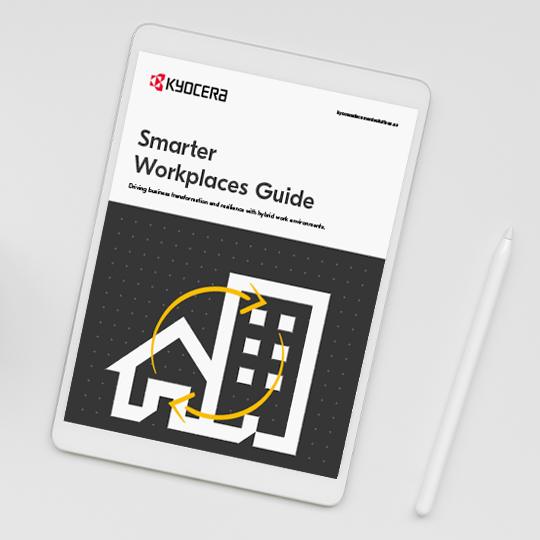
As we see companies move towards a hybrid workplace, IT departments are now managing more computers and printers in more workspaces than ever before. Businesses have adopted new platforms rapidly, and workers are accessing business information and data from a multitude of devices, networks and locations. This creates a range of cybersecurity challenges for businesses as they transition from traditional workplaces to hybrid work environments.
As organizations enable their employees to work from anywhere, at any time, they must focus on securing their new hybrid workspaces.
Here are four ways you can secure your hybrid work environment and reduce the risk of a data breach both now and in the future.
Securing endpoints is critical to ensure that attackers do not use them to access your company network. While company computers are likely to already be secured, workers may also be using other devices that are open to attack, such as personal mobiles and home office printers, particularly if they work remotely.
Many workers use mobiles to access business information, including emails, shared files and instant messages, and without appropriate security, this leaves your data open to phishing scams, mobile malware, app data leaks and network attacks.
To secure mobile devices, workplaces should start by establishing a mobile security or bring-your-own-device (BYOD) policy that provides clear guidance on what personal devices employees can use for work and how information should be accessed in a safe and secure manner, as well as mobile security best practices.
IT departments should also implement cybersecurity solutions, such as anti-malware software and VPNs, conduct regular security audits and have a data breach response plan in place.
Home office printers are a commonly overlooked security risk, particularly in businesses that adapted quickly to remote work and hybrid workplace models. Consumer printers do not offer the same level of protection that specialized devices do, leaving your network and data open to attack. Vulnerabilities include unauthorized access to print data, unauthorized configuration changes, the printer as an attack point for other applications and print job manipulation.
Specialized printing devices come with strong security features to counter these attacks, such as network authentication, data encryption, overwrite-erase and password access. Furthermore, specialized devices are more cost-effective and productive.
Securing endpoints is critical to ensure that attackers don't access network.
As well as ensuring the security of devices, businesses can take specific steps to secure their data at its source. By using a content services solution, such as a document management system (DMS) or Enterprise Content Management (ECM), organizations will have access to several features that can improve data security and reduce the risk of an attack, including:
By using the right expertise and technology, these hybrid workplaces provide organizations with the resilience and scalability they need to thrive in a rapidly changing world.
Cloud software and services are commonly used in hybrid workplaces for their accessibility and scalability. However, many organizations mistakenly believe that the provider is solely responsible for security of the cloud environment.
However, Gartner predicts that by 2025, 99 percent of cloud security failures will be the customer’s fault. Additionally, if organizations don’t control their public cloud use—that is, their use of free cloud services—then they will also be highly likely to share sensitive data over these platforms.
While cloud service providers must provide systems and servers that are secure, businesses also have a responsibility to ensure their data is safe and secure. There are five steps that organizations can take to secure their information in cloud environments:
Verizon’s 2019 Data Breach Investigations Report found 33 percent of attacks included social engineering, while 32 percent of breaches featured phishing. Furthermore, errors helped cause a breach in 21 percent of cases. In other words, your employees are your most likely security risk, even if it’s not their intention.
Cybersecurity awareness training is critical for reducing the risk of a data breach as a result of an employee’s actions. Training should take place at least annually and cover topics such as:
Create a productive hybrid work environment that is secure and resilient.
